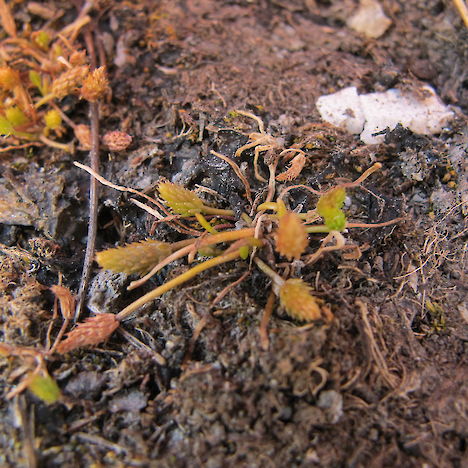Threat category:
Threatened: Nationally Vulnerable?Regions:
Hawkes Bay, Wellington, Marlborough, Canterbury, Otago, SouthlandDistribution:
North Island and South Island. The only recent records are from Otago and Canterbury.
Key Features
- A small, annual, hairless, rosette herb with very narrow leaves, that dies down after flowering. Several flower stalks may be present, up to 10 cm long, each with a terminal spike of tiny flowers. These spikes become dry seed heads up to 8 mm long.
Distribution and Habitat
- The historic distribution of Myosurus minimus subsp. novae-zelandiae is from Hawkes Bay and Wellington in the North Island, and in the eastern South Island from Marlborough to Southland. Recent records are from Otago and Canterbury.
- Habitat is mostly ephemeral tarns and flushes and saline patches that become dry and parched in summer, but the species occurs over a wide altitudinal range.
Threats
- Habitat modification and loss.
- Competition with invasive plants.
Management Opportunities
- Survey for new locations.
- Mark known sites.
- Protection of habitat.
- Avoid afforestation of known sites.
- Weed control.
Monitoring Options
- Check existing populations annually.
- Report new locations to DOC, NZPCN.
Further Information and Support
- New Zealand Plant Conservation Network (NZPCN). http://www.nzpcn.org.nz
- Weed management - Department of Conservation, Regional Councils.
- References
- Rogers, G.; Walker, S.; Tubbs, M. & Henderson, J. (2002). Ecology and conservation status of three “spring annual” herbs in dryland ecosystems of New Zealand. New Zealand Journal of Botany 40: 649-669.
- Peter de Lange, Peter Heenan, David Norton, Jeremy Rolfe and John Sawyer (2010). Threatened Plants of New Zealand. Canterbury University Press, Christchurch. 472 pp.




